
Halictidae is the second-largest family of Anthophila bees. Halictid species occur all over the world and are usually dark-colored and often metallic in appearance. Several species are all or partly green and a few are red; a number of them have yellow markings, especially the males, which commonly have yellow faces, a pattern widespread among the various families of bees. The family is distinguished by the arcuate basal vein found on the wing.

The genus Halictus is a large assemblage of bee species in the family Halictidae. The genus is divided into 15 subgenera, some of dubious monophyly, containing over 200 species, primarily in the Northern Hemisphere. Most species are black or dark brown, sometimes metallic greenish-tinted, with apical whitish abdominal bands on the terga.
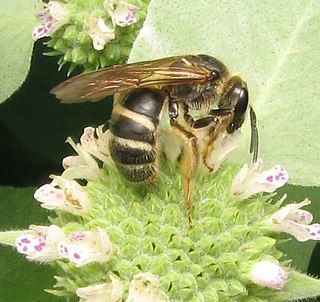
The sweat bee genus Lasioglossum is the largest of all bee genera, containing over 1700 species in numerous subgenera worldwide. They are highly variable in size, coloration, and sculpture; among the more unusual variants, some are cleptoparasites, some are nocturnal, and some are oligolectic. Most Lasioglossum species nest in the ground, but some nest in rotten logs.

Halictus gemmeus is a species of bee in the family Halictidae, the sweat bees.
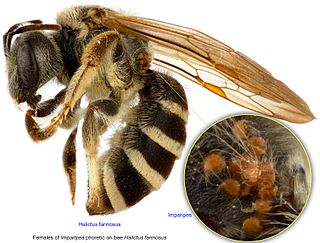
Halictus farinosus is a species of sweat bee in the family Halictidae.
Halictus parallelus is a species of sweat bee in the family Halictidae.

Halictus tripartitus is a species of sweat bee in the family Halictidae.
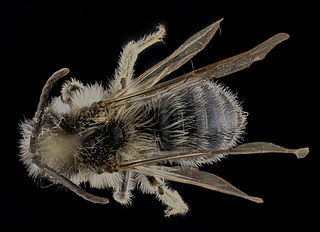
The cold miner bee is a species of miner bee in the family Andrenidae. Another common name for this species is the frigid miner. It is found in North America.
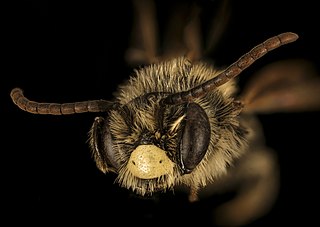
The short-tongued miner bee is a species of miner bee in the family Andrenidae. It is found in North America.
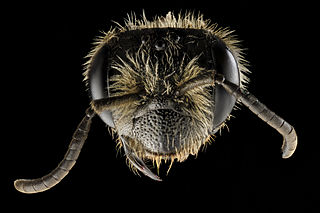
The wrinkled miner bee is a species of miner bee in the family Andrenidae. Another common name for this species is the rugose andrena. It is found in North America.
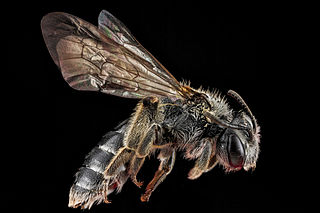
The Virginia miner bee is a species of miner bee in the family Andrenidae. Another common name for this species is the Virginia andrena. It is found in North America.
The small black miner bee is a species of miner bee in the family Andrenidae. It is found in North America.

Halictus confusus, the southern bronze furrow bee or confused sweat bee, is a species of sweat bee in the family Halictidae. It is a primitively eusocial bee species found in open habitats in Eurasia and North America.
The Canada miner bee is a species of miner bee in the family Andrenidae. Another common name for this species is the Canada andrena. It is found in North America.

The two-spotted miner bee is a species of miner bee in the family Andrenidae. It is found in Central America and North America.
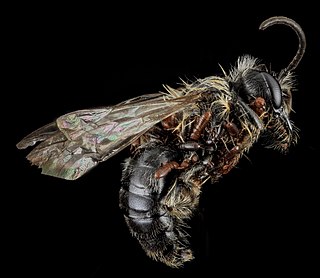
The Carlinville miner bee is a species of miner bee in the family Andrenidae. Another common name for this species is Carlin's miner. It is found in North America.
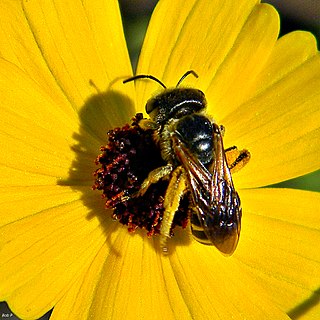
Halictus poeyi, or Poey's furrow bee, is a species of sweat bee in the family Halictidae.
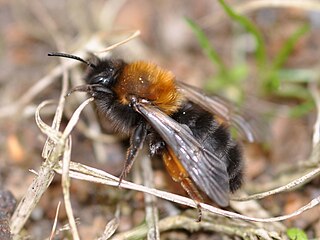
The Clark's miner bee is a species of miner bee in the family Andrenidae. Other common names include Clark's andrena and Clarke's mining bee. It is found in Europe & Northern Asia and North America.
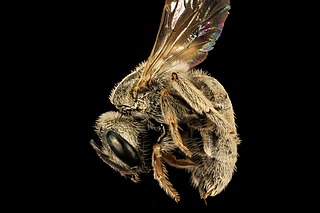
Halictus tectus is a species of sweat bee in the family Halictidae.

Halictus hotoni, the emerald furrow bee, is a species of sweat bee in the family Halictidae native to southern Africa and introduced to Australia. It was described by Joseph Vachal in 1903.

















